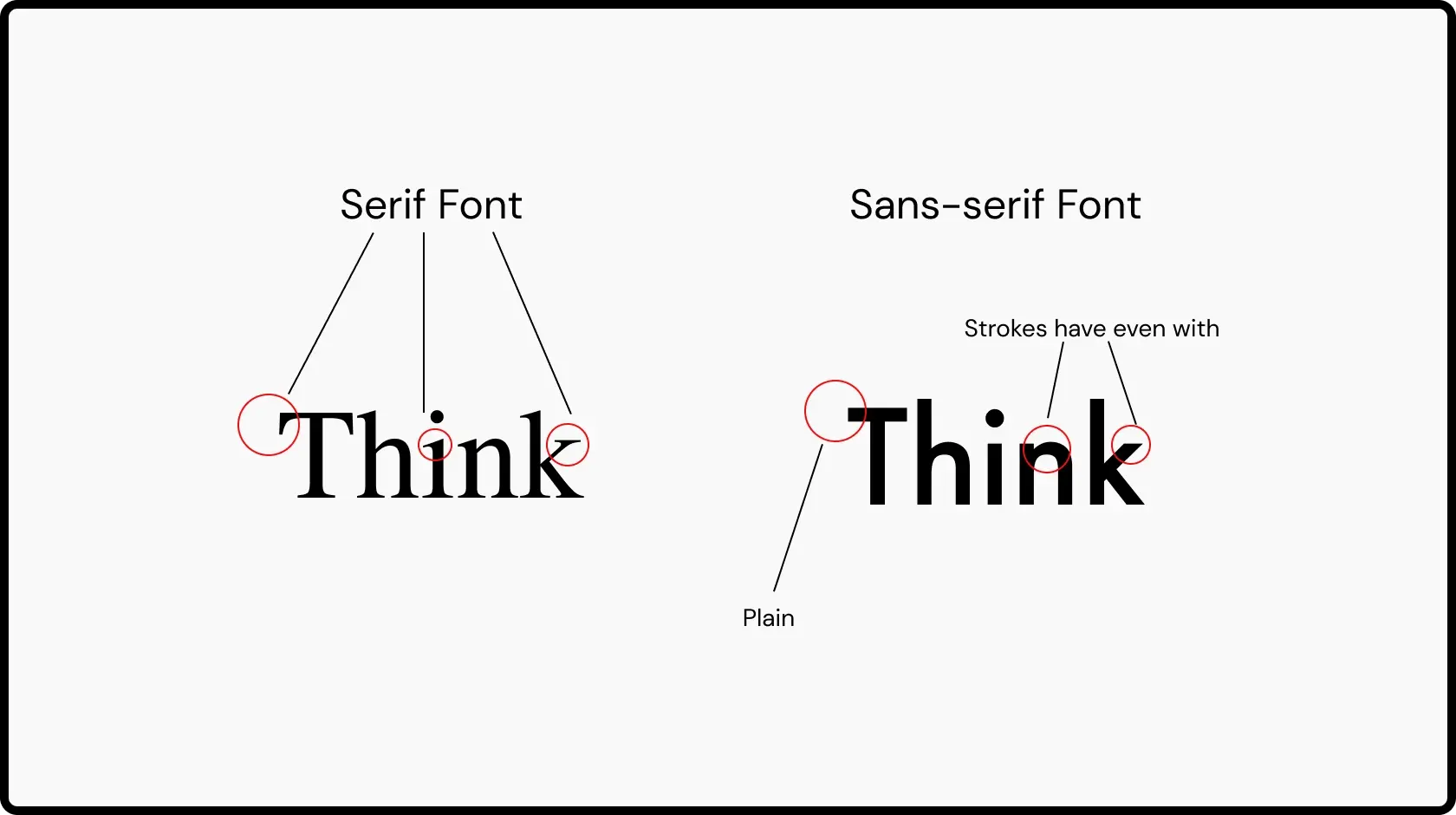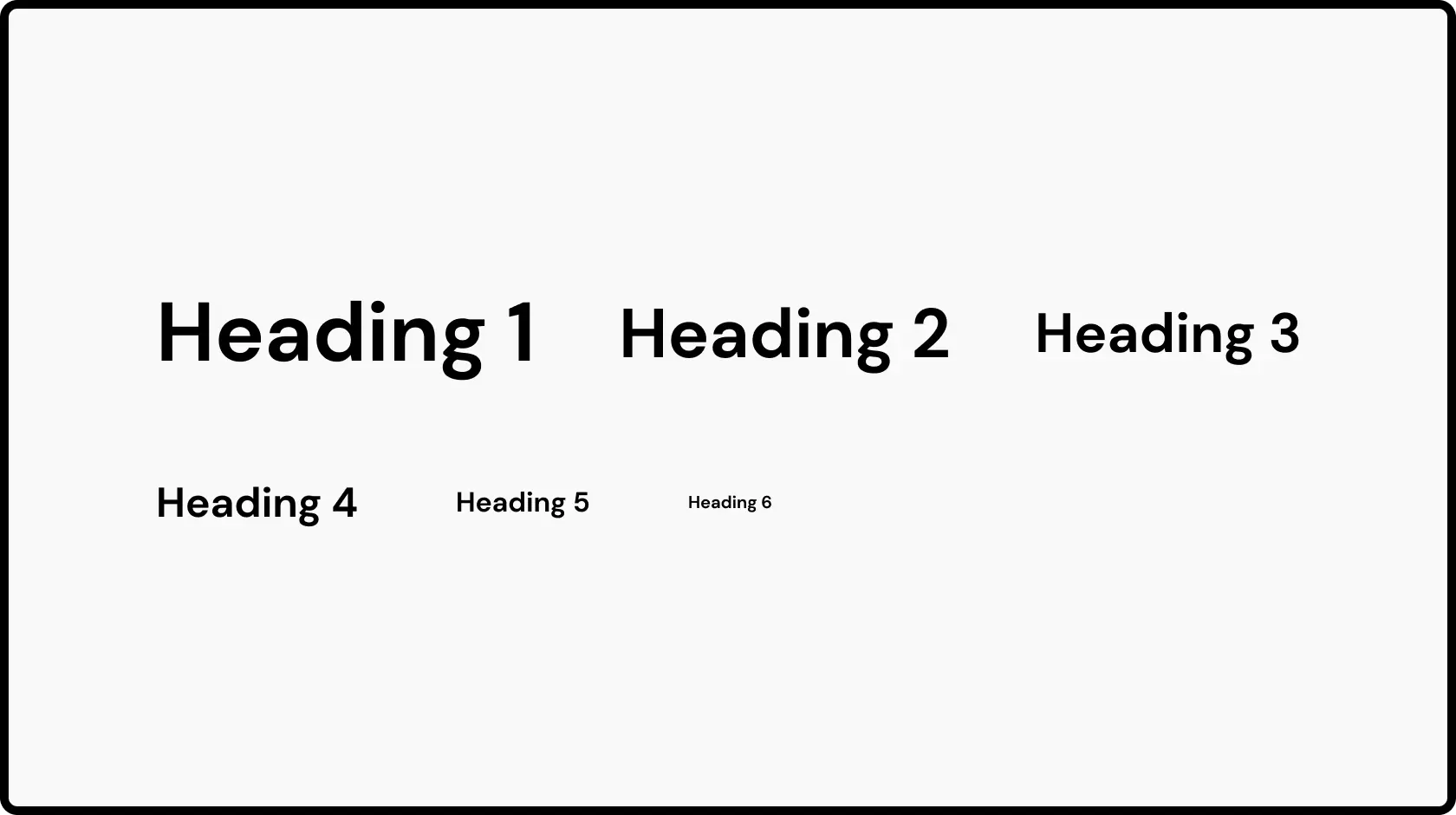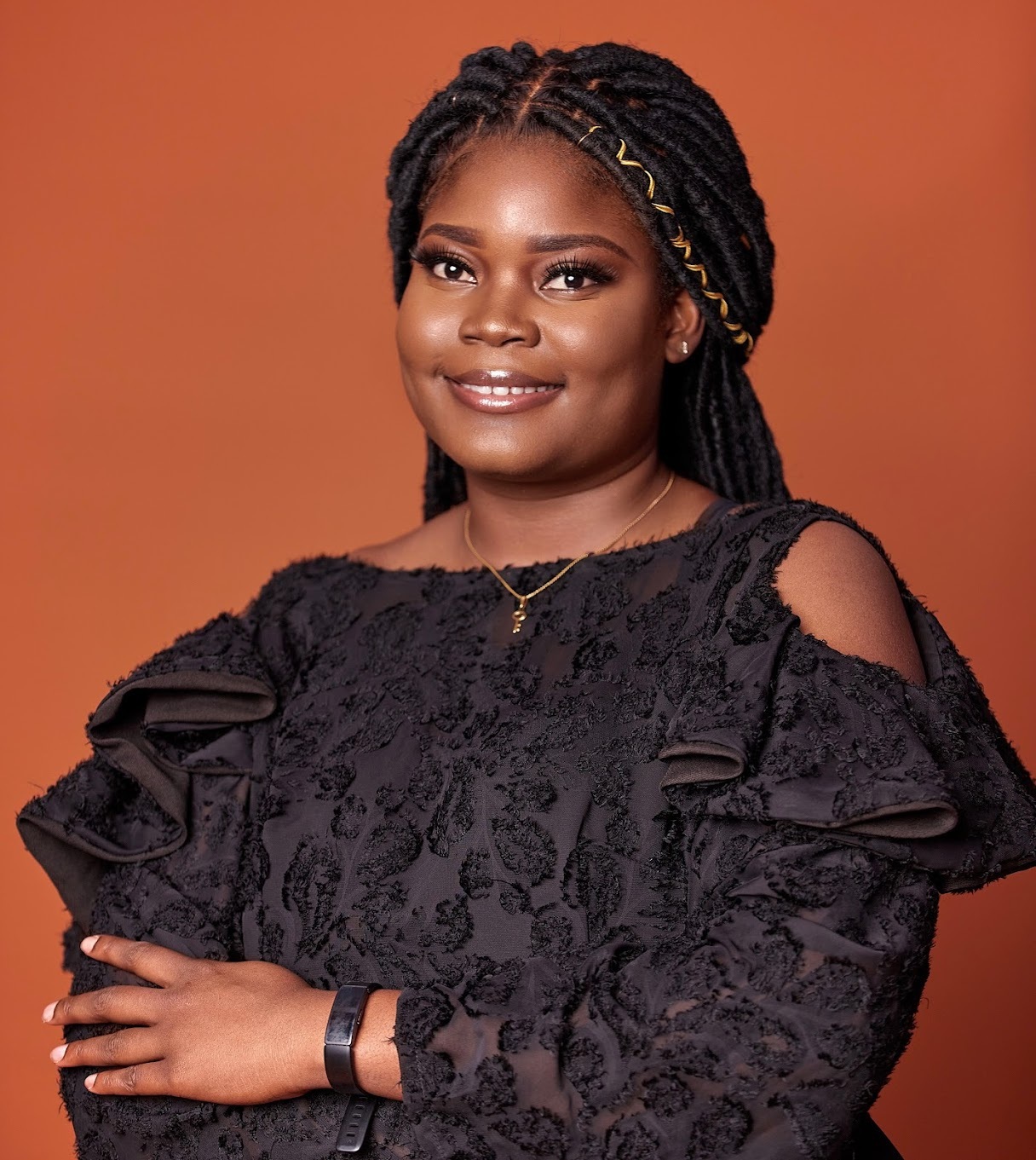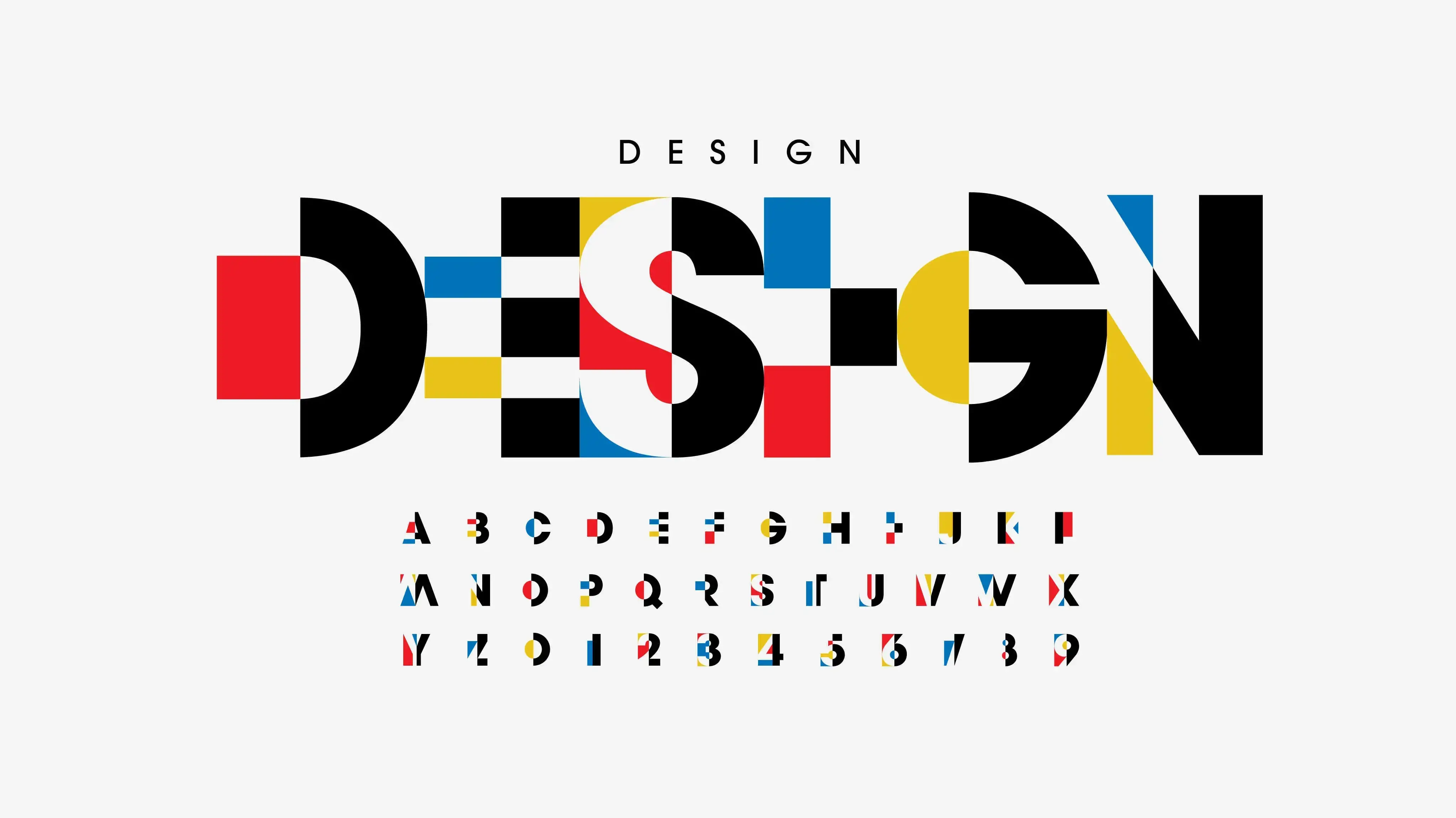Typography in graphic design refers to the arrangement of type to make it visually appealing, easily legible, and readable across various platforms. This includes various design elements, such as typefaces, font styles, font sizes, text alignment, letter spacing, line height, and the careful balance of the space between letters, known as kerning. Over time, several fonts have been developed to represent various moods and styles. Selecting the right font can enhance your message and make it more appealing to readers. This article provides best practices for using fonts in graphic design, including considerations like style, uniqueness, and clarity when choosing a font for your design or project.
The Importance of Typography in Graphic Design
Good typography is important for clear communication in design. It makes the text more legible and visually appealing, helping designers convey their message to their audience. Here are some reasons why typography is essential in graphic design:
Communication: Typography refers to the style and design of text, which can greatly impact how easy it is to read and understand. Proper typography can convey the tone, style, and mood of a design or message. This is crucial in effective communication, as typography can greatly affect how well a message is conveyed and understood.
Legibility: The design of text can affect how easy it is to read and understand. When text is too small or clustered, it becomes difficult to read, and the message can be lost, rendering the design ineffective. Choosing the right text style is crucial to convey the intended message effectively.
Visual Appeal: Typography can enhance a design's visual interest and attractiveness. It can also help to organize the design by highlighting certain elements more than others, capturing the viewer's attention and making the design more engaging.
Brand Identity: Typography can help create a unique style and look for a brand. Using the same style of text across all promotional materials can establish a consistent visual identity for the brand, making it easier for people to recognize and remember it.
Emotional Connection: Typography can create different moods or feelings in the viewer. For example, if the text looks fun and playful, it can create a sense of happiness or cheerfulness. On the other hand, if the text looks strong and bold, it can make people feel powerful or confident. In this way, the appearance of text can elicit specific emotions in people, making it an important aspect of design.
Components of Typography in Graphic Design
Serif vs. Sans-serif

Choosing the right typeface is an important decision when designing any written content. One key consideration is whether to use a serif or sans-serif font. To understand the distinction, it is important to know the difference between these two font types.
Serif
The history of Serif typefaces can be traced back to ancient Rome, where letters were often engraved on buildings and monuments using serif typefaces. These typefaces are characterized by small lines or strokes at the end of each letter, known as serifs. "serif" originates from the Dutch word "schreef," which means a line or stroke.
The serif typeface was designed to make letters more visible, readable, and legible. Serif typefaces, such as Times New Roman, Garamond, Freight Text, and Merriweather, are frequently used in printed materials like books, newspapers, and magazines because they are considered more formal.
San-Serif
Sans-serif typeface is a font category that does not have extended serifs at the end of each letter. These fonts are often considered more modern and minimalist than other fonts. "Sans" is a French word that means "without" or "not having." In typography, "sans-serif" describes fonts that do not have small strokes (serifs) at the end of characters.
Some common examples of sans-serif typefaces include Arial, Avenir, Gotham, Helvetica, and Proxima Nova. They are often used in digital media, such as websites, mobile apps, social media posts, and presentations. These fonts convey a sense of modernity, simplicity, and minimalism, which can be particularly effective in digital environments where readability and clarity are essential.
Legibility and Readability
When choosing a typeface, it's important to select a legible font. It should be easily read with clear, distinct letters and words. But how do you know if a font is legible? You can identify a legible font by how well you can distinguish individual characters from one another. Reading can be difficult and slow if characters are too similar or overlapping. Legibility measures how easily a reader can recognize one letter or word from another and how smoothly and quickly they can read blocks of text. When choosing a typeface, remember that legibility is key. It can make a significant difference in the readability and overall impact of your text.
Readability can vary depending on the typeface used and the content's arrangement. The focus is on each character and the overall reading experience, including font size, spacing, line height, and hierarchy. These elements can significantly affect how inviting the text appears and how engaged you feel while reading it. Good typography is more than just making the text look nice; it's also about making it easy to read and understand.
Personality and Branding
Typography is a crucial aspect of branding beyond selecting a typeface. It can convey your brand's personality and evoke emotions that make it memorable. With a vast selection of typefaces available, choosing the right one can determine the tone of your brand's message. For example, a sans-serif font can communicate modernity, minimalism, and simplicity, while a serif font can give a more formal or traditional feel. However, before selecting the right typeface for your brand, it's essential to understand your brand's personality and how you want your audience to perceive it.
This approach allows you to identify the right typeface that aligns with your brand's personality and effectively communicates your message to your audience. Choosing the right typography is a powerful tool in branding that can enhance your brand's identity and make it stand out.
Headings and Sub-Headings

Headings are typically large texts placed at the top section of the content, while sub-headings are placed below the headings to create a hierarchy that allows readers to scan and easily digest the content. To use headings and sub-headings effectively, it's important to follow the guideline of hierarchical structure, which includes six levels of headings. The highest level is H1, the main heading, while H2 to H6 are sub-headings. There are no fixed ideal sizes for the headings. H1 is usually the largest prominent heading, and H2 is slightly smaller than H1. H1 should be significantly larger than the body text and other headings and be visually prominent enough to draw the reader's attention to the main title or heading of the page.
When creating headings and subheadings, it is important to use concise language that accurately reflects the content. Doing so helps readers understand the main ideas and navigate the content more effectively. Following these guidelines, you can create structured headings and subheadings that improve your content's visual appeal and readability. This, in turn, will help ensure your content is easy to navigate and understand, making it more accessible to all readers.
Body Text
The body or main text is the primary content of web pages, magazines, and books. It carries the main message and provides detailed information about the topic. Body text is typically written in smaller font sizes, usually around 16 pixels, to differentiate it from larger headings or subheadings. One of the key features of body text is that it contains most of the vital information and details you need to know about a particular topic. As you read through a document, the body text is where you'll spend most of your time because it delves into the specifics and provides depth.
Callouts and Pull Quotes
Callouts and Pull Quotes are visual elements that direct the reader's attention to specific information on a page. Callouts are often used for captions or footnotes and are set apart from the main text using different fonts, sizes, or colors. In contrast, pull quotes are designed to highlight key phrases or ideas from the main text by using larger fonts and distinctive formatting. They can be placed in margins or boxes next to the text they refer to and help break up long blocks of text, making it easier to read and more engaging.
Size and Weight
In typography, the size and weight of a typeface are crucial elements that impact the overall appearance and legibility of text. Choosing the appropriate font size is essential, as it determines the readability and visual hierarchy of the content. Size refers to the height of the letterforms, measured in points. Each point is equivalent to 1/72 of an inch, which may seem small but can make a significant difference in text.
On the other hand, weight pertains to the thinness and boldness of a typeface. Different typefaces come in varying weights, such as thin, regular, semi-bold, bold, black, condensed, and more. By selecting the appropriate weight for your text, you can convey different moods or messages and create a visually engaging design. Understanding the difference between size and weight and using them effectively can elevate the content.
Colors
Colors evoke emotions and convey meaning to how a certain element looks or feels. To ensure your text is easy to read and legible, it's important to choose colors with a high contrast value between the text and background.
For instance, using a light blue color on a dark blue background, or a dark green color on a light green background, can create a strong contrast and make your text pop. On the other hand, colors with a low contrast value, like yellow text on a light pink background, can be hard to read.
Spacing and Alignment
Spacing involves adjusting the space between letters, words, and lines of text. This can help make text look more balanced and readable. There are three main ways to adjust the spacing in typography: tracking, kerning, and leading.
Tracking involves adjusting the spacing between all characters in a text, while kerning involves increasing or decreasing the space between two specific characters in a text. Leading refers to the space between lines of text and can greatly impact how easy it is to read a text.
Text alignment is another area that can help make the text more readable and visually appealing. There are four main types of text alignment: left-aligned, centered-aligned, right-aligned, and justified. Left-aligned text is aligned to the left margin of the page, while the right-aligned text is aligned to the right margin of the page. Centered alignment is when the text is centered in the middle of the page. Using alignment can help create a clean and organized look when creating content.
Tips for Effective Typography
Keep it Simple: When designing or creating typography content, prioritize simplicity, clarity, and conciseness. Overloading readers with too much visual information can overwhelm the reading experience. To avoid this, use a limited number of fonts and colors. Too many fonts or colors create visual clutter and impair readers' ability to focus on the content. Instead, be selective and choose a few fonts and colors that complement each other and suit the intended audience.
Use Appropriate Line Spacing: Line spacing refers to the spacing between each line of text. If the lines are too cramped or far apart, it can negatively affect readability. Using appropriate line spacing can improve clarity and ease of reading, leading to a more pleasant reading experience.
Avoid Overuse of Capitalization and Italics: Using too many capital letters and italics in the text can make it hard to read. This is because it creates too much visual distraction. While capitalization can highlight important words and italics can be used for emphasis, overusing them can lead to a cluttered appearance. It is necessary to use them properly so that the text is easier to understand and read.
Use Proper Punctuation: Punctuation marks, such as commas, periods, and dashes, help to make the text more readable and visually appealing. Proper punctuation helps to organize the text and create a clear hierarchy, which makes it easier for readers to understand and follow the intended message. Using correct punctuation, writers can guide readers through the text logically and easily.
Wrapping Up
Typography is essential for creating a visually appealing and readable design. It involves selecting the appropriate font, size, spacing, alignment, and punctuation. By doing so, designers can create aesthetically pleasing and easily comprehended designs. Typography is crucial for effectively and efficiently communicating the design's message, so designers must pay attention to it. Additionally, it's beneficial to experiment with different typefaces and techniques to find what works best for each design, as there is no one-size-fits-all approach to typography. By trying different approaches, designers can effectively convey their message and stand out.
Frequently Asked Questions
How do I choose a design for my website?
One of the most important things when creating a website for your art is the design. Even though your pieces of art might be amazing, people will leave if your site is hard to navigate. This is why it’s important that the site is easy on the eyes and easy to navigate.
What are the customization options with a website builder?
Although website builders usually have some customization settings, like templates, fonts, margins editing, and so on, when compared to CMSs, it lacks customization options.
Can I afford a website builder?
Yes. Besides paid website builders, there are also free ones; however, they come with fewer options.
How to design a podcast website?
When using a CMS, designing your website will be quick and easy. You can add a template you’ve created or pick one of the pre-made templates that the CMS features in its library.

Gift Egwuenu is a developer and content creator based in the Netherlands, She has worked in tech for over 4 years with experience in web development. Her work and focus are on helping people navigate the tech industry by sharing her work and experience in web development, career advice, and developer lifestyle videos.
View all posts by Gift Egwuenu




















